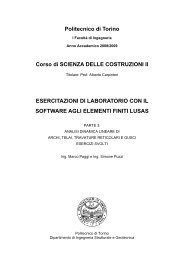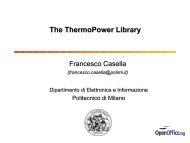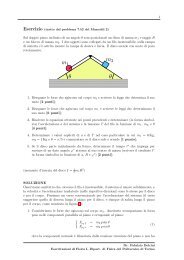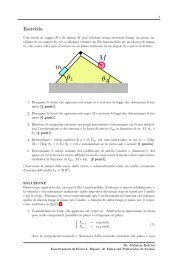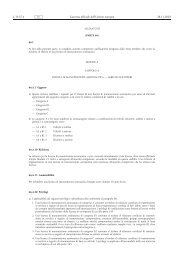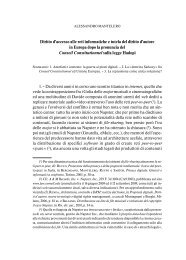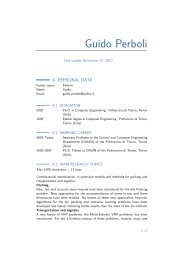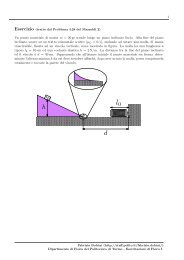The ITER toroidal field model coil project
The ITER toroidal field model coil project
The ITER toroidal field model coil project
Create successful ePaper yourself
Turn your PDF publications into a flip-book with our unique Google optimized e-Paper software.
210 A. Ulbricht et al. / Fusion Engineering and Design 73 (2005) 189–327<br />
<strong>The</strong> smooth and safe cool down, as shown in this<br />
Fig. 4.4, was limited by the thermal conduction not<br />
by the refrigerator cooling capacity.<br />
All components were cooled in parallel with the<br />
mass flow rate coming directly from the 2 kW refrigerator.<br />
<strong>The</strong> mass flow rates of the individual components<br />
were adjusted manually in order to minimize the temperature<br />
differences in the test arrangement. <strong>The</strong> total<br />
mass flow rate was in the range between 75 and 95 g/s.<br />
At the start of the cool down the cooling power was<br />
around 7 kW and decreased at the end to 2 kW. <strong>The</strong> cool<br />
down was stopped for 6 h at 77 K as shown in Fig. 4.4<br />
for a calibration of the current distribution measurement.<br />
<strong>The</strong> vacuum pressure in B300 was 9 × 10 −4 mbar<br />
at room temperature and reached 5.6 × 10 −6 mbar at<br />
LHe Temperature. During the cool down, and also during<br />
operation, the leak rate was checked frequently<br />
and no indication of a significant leak was found (see<br />
Table 4.2).<br />
<strong>The</strong> warm up was also computer-controlled above<br />
20 K, like the cool down, and the time needed was 2<br />
weeks in both test phases.<br />
4.3.2. Cryogenic operation<br />
<strong>The</strong> control dewar B250 was filled with LHe in<br />
parallel at the end of the cool down. When the cool<br />
Fig. 4.4. Cool down of the TFMC test configuration for test Phase 2.<br />
down was finished the secondary cooling loop was<br />
pressurised to supercritical conditions. By means of the<br />
He piston pumps, the supercritical He was then circulated<br />
in the cooling loop of the <strong>coil</strong>s. For the extended<br />
operation with a required mass flow rate up to 280 g/s,<br />
both piston pumps were operated in parallel. <strong>The</strong> mass<br />
flow rate of the different components was adjusted to<br />
the values as listed in Table 4.4. Also the heat load<br />
of the various components was investigated carefully<br />
before current operation and the results are included in<br />
Table 4.4 as standby values. <strong>The</strong> measured values were<br />
in good agreement with the calculated ones except of<br />
the heat load of the bus bars types 1 and 2. This heat<br />
load of 36 W for the negative and 40 W for the positive<br />
bus bar required a high He mass flow rate in order<br />
to keep the outlet temperature of the bus bars below<br />
6 K and avoid a quench of the NbTi conductor during<br />
current operation. <strong>The</strong> reason for this unexpected high<br />
heat load could not be clarified up to now.<br />
An advantage of the conductor and TFMC winding<br />
design is the relatively low pressure drop that was<br />
measured at room temperature as well as at LHe temperature<br />
(see Section 6.2.1) [51] and the relatively<br />
uniform mass flow distribution in the TFMC winding<br />
without an active control as shown in Fig. 4.5. <strong>The</strong> maximum<br />
deviation from the average mass flow rate was<br />
around −10% in DP4 and around +10% in DP5. <strong>The</strong>se



